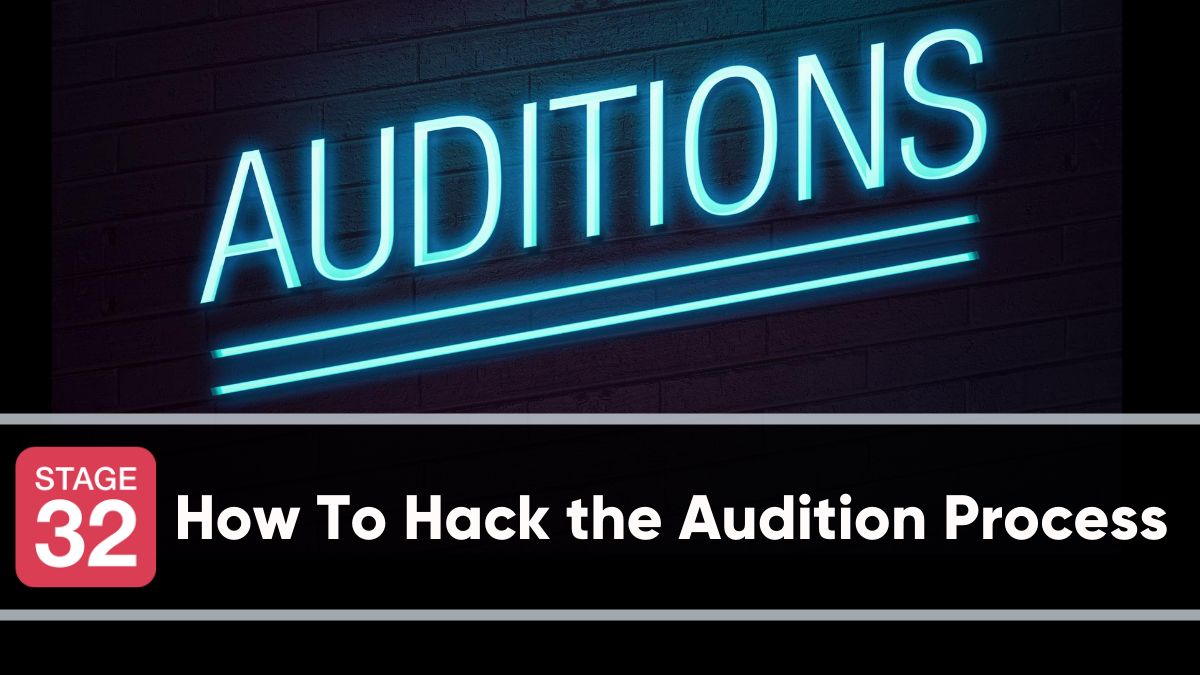5 Common Scene Struggles and How to Fix Them
Do you have a friend whom you dearly love, but who just can’t seem to tell a story that doesn’t leave you wondering what’s for dinner or what you’re going to watch on Netflix? Maybe your friend tells stories like this: “and then...and then...and then...and THEN…” -- as if just raising the pitch and volume of each subsequent “then” raises the intensity of the story?
Or maybe they’re so vague you’re not sure you know what they’re talking about -- or perhaps they get bogged down in so many details that you’re silently begging them to get to the point already.
These kinds of narrative problems don’t just confront us when Aunt Mary comes to visit. We deal with them every time we sit down to craft a scene.
Given the fact that we get maybe two or three pages to hook a reader, the importance of writing powerful scenes can’t be overstated. And if we remember that a story isn’t just a linear thing, but a multi-dimensional reflection of a reality that is complex and mostly intangible, we realize just how much work each and every scene needs to do.
So let’s take a look at five common scene struggles -- and I’ll offer some quick tips on how to find a solution.

1. Information (Mis)Management
One of the most common struggles I see in first drafts is a lack of clarity in the details used in scene descriptions. This results in vagueness and a waste of the precious real estate of the page.
Screenwriting is the medium of economy. If you’re going to put it on the page, it better count for something. This sounds like a tremendous task, and it is. We have to think through carefully which details will convey the atmosphere, character, world, and conflicts of the script. Imagine I’m building a scene inside an office, and this is what I write:
A computer sits on the desk surrounded by piles of papers. A chair, heaped with books, faces the door. Hanging on the wall, three diplomas.
Do you have a mental picture of the space? Sure, probably. But do you know anything substantial about the character whose office this is? Not really.
What if I kept these same details and rewrote them to be a bit more precise?
An ancient computer sits on a makeshift desk, surrounded by piles of unpaid bills. A rickety chair, heaped with criminal procedure books, faces the door. Hanging askew on the wall, diplomas from LSU, and Texas Tech.
I added just one line to my scene description, but how much more have I revealed about the character, the potential conflicts, and the world of the script?
The point is simple: if a detail is important enough to include, it’s important enough to be precise. And choosing those two or three really “telling” details that can do dual or triple duty in your script will also help you avoid the “TMI” effect of overwritten scene description.
Struggle: Descriptions are vague and boring and take up too much real estate.
Solution: Repackage the description in more vivid language that offers a window into character, conflict, and world...and keep yourself to three lines maximum.

2. Unnatural Dialogue
One of the most difficult -- but most mind-blowing and rewarding -- tasks that face us as writers is to create imaginary people and make the audience believe they’re real. But one of the most common struggles I see in early drafts is some combination of the following three dialogue issues:
- Superficial small talk lead-ins
- Stilted, inauthentic expression
- Carbon-copy voice
Let’s quickly look at each one in turn.
1. Small Talk
Chit-chat happens because, especially in a first draft, we’re often not quite sure how to get into our scenes. We may not even be quite sure what the purpose of the scene is (see #5 below). Fortunately, this struggle has the easiest solution -- and it’s called the Delete key. Cut all that intro stuff and just drop us into the scene like we’re interrupting the characters right before the “thing” -- the core purpose of your scene -- happens.
Struggle: Superficial small talk takes up to much real estate.
Solution: Make like Cyberman and delete, my friend.
2. Inauthentic Expression
Stilted expressions most often come out of characters’ mouths when they’re delivering some form of exposition. I recently read a technothriller novel where the scientists had the annoying habit of narrating the progress of their experiments using jargon-laced, stilted expressions that they would never use in a real lab when speaking to colleagues.
Whether they’re explaining thermonuclear astrophysics or telling someone they’re heading to the store, the key to avoiding unnatural or stiff dialogue is to stay firmly in the character’s voice, which we’ll get to next.
Struggle: Stiff and stilted expressions.
Solution: Read it aloud. If it sounds fake or mechanical, reword it or delete it.
3. Carbon-Copy Voice
This leads me to the final -- and most challenging -- struggle in this category: interchangeable character voices. To test for this, remove all the character names from your scene and read it. If you can’t tell who’s who, you haven’t captured your characters’ unique voices well enough yet.
This is an incredibly common first draft issue, and the root problem can often be traced back to an incomplete prewriting process. If you really know your characters, you should have an intuitive sense for how they express themselves.
When I’m reading scripts with this issue, I sometimes find that the characters’ voices will become more distinctive later in the script. This makes sense because we learn about our characters as we write them. So, sometimes all you need to do is go back and rework the early pages to bring the voices into alignment.
Struggle: Carbon-copy voices.
Solution: Do the distinctive voice test on a later scene in the script. If it passes, rewrite earlier scenes to match. If it fails, go back and do some additional character development work.

3. The Serial Teller
There is a very strong temptation when we’re writing to structure events serially -- to follow the “and then, and then, and THEN” narrative model I described at the opening of this article. I call this the Serial Teller effect.
Structurally, every scene is a microcosm of the whole. It has a beginning, a middle, and an end (an arc). It has conflict and should have an emotional turn. It should either pay off details introduced earlier or set up new ones -- or both. None of these elements are satisfied well by the serial teller model of narrative.
Serial telling reminds me of the classic scene in the Marx Brothers’ movie Animal Crackers where Chico plays the same section of a song over and over again on the piano. As the incessant repetition continues, Chico says, “I can’t think of the finish!” -- to which Groucho wittily replies, “And I can’t think of anything else!”
If you have small children, you’re very familiar with this mode of storytelling. Kids’ stories often have a beginning but seem to have no real middle and certainly feel like they have no end. Imagine how kids might tell the story of what happened at school: “In art class, Susie hit Joe with a marker. And then I finished my picture. And then it was time for lunch.”
This is chronology. The only connection between these events is that one happens after the other. Chronology isn’t causality -- and causality is what makes things interesting. So, instead of focusing on the chronology of events, focus on the dynamic of cause-effect, or, in Newtonian terms, action-reaction.
South Park writers Matt Stone and Trey Parker have a brilliant trick to help with this: they use the words “but” and “therefore” to connect events during the planning phase so that they avoid the words “and then.”
So, to rewrite the art class sequence in a way that avoids serial telling, we could say: “In art class, Susie hit Joe with a marker. [But] Instead of hitting her back, Joe told the teacher, and the teacher sent her to the principal’s office. [Therefore] She got detention after school.” Action. Reaction. Consequence.
This tip applies not only to the scene level but also to the level of the script as a whole. Try to avoid constructing your script outline as a timeline. Narrative -- like history -- isn’t just a series of events. It’s a complex web of actions, reactions, and consequences of flawed human beings within any given moment.
Struggle: Narrating events chronologically, resulting in a “Cliff’s Notes” summary feel.
Solution: Rewrite the scene or sequence to emphasize the action/reaction/consequence dynamic.

4. Unbelievable Escalation
A common struggle we writers can face is knowing how to escalate the stakes effectively. In this case, “unbelievable” isn’t a good thing. Escalation that’s not believable disengages the audience from the story.
Remember the scene in You’ve Got Mail when Joe Fox (Tom Hanks) writes an email to Kathleen Kelly (Meg Ryan) to explain why he stood her up? He types, “I was stuck in a meeting, which I couldn’t get out of. The electricity went out in the building and we were trapped on the 18th floor and the telephone system blew too.” He concludes this lame fabrication with the words “Amazingly enough” -- and then he deletes the whole thing, because he knows it’s not believable.
When it seems that our characters aren’t suffering enough or that the stakes aren’t high enough, sometimes our solution is to pile something else on. It’s not enough to be stuck in a meeting -- add a storm that knocks out power. And then knock out the phones too. And then….
Problem-stacking is the stakes-equivalent of Serial Telling. When you simply pile on the pain to try to increase characters' suffering, the audience’s response will be just like Joe’s: an eye roll and an “amazingly enough.” And that’s as damning a thing as anyone can say about a character’s sufferings.
So how do we fix an escalation that’s falling flat?
If we’re not feeling the stakes enough, it’s because this is literally true. We’re not feeling them enough. If you’ve ever watched a movie or TV show that promised thrills and chills, but it left you shrugging and yawning, consider how much emotional connection you felt to the characters. We have to care about the character first, or it doesn’t matter what you do to them -- the stakes will never feel high enough.
Struggle: Effectively raising the stakes and escalating tension.
Solution: Intensify our understanding of the character’s emotional response so that we know what she’s risking at each step and just how much she stands to lose.

5. What’s the Point?
The final common struggle I see from writers in first draft scene work is the Pointless Scene Problem [PSP]. These are throwaway scenes, where the same conversation gets rehashed, or the action goes around in a circle without any forward progression of the story, or we spend precious pages in small talk mode.
I always chuckle a bit when I find these scenes, because I can’t tell you how many times one of the characters says some variant of, “Why are we having this conversation again?”, “We’re not getting anywhere”, or “Why are we doing this?” If your character says this on the page, there’s a high chance your reader is saying it too. It’s a huge neon sign that the scene is drifting into pointlessness.
The solution for this, like the cure for carbon-copy voice issues, lies in your prewriting process. If you map out your story -- even if you’ve just taken the time to plan out the major beats -- you’ll know what needs to happen when, and you won’t be trying to figure out what happens next as you’re writing.
Getting the note back from a reader or a manager or executive that you could have cut 20 pages out of your script because of repetition or overwriting isn’t any fun. To write lean and tight scripts where everything has a place and there’s nothing extra is a strive-worthy goal -- and I’m a firm believer in the power of story-mapping and prewriting to help us get there.
Struggle: Pointless scenes that repeat information or stall the action.
Solution: Listen to your characters when they ask, “What are we doing in this scene?” -- and do the prewriting so they don’t have to call you out.

Prewrite, Rewrite
Many of these scene-level struggles are also (and perhaps obviously) script-level struggles -- as I mentioned before, scene structures are replicas in miniature of story structures. It’s like one big glorious Mandelbrot fractal. And the beautiful thing about this is that the solutions that work on the scene level will also work on the script level.
Taking the time to invest in pre-writing is one of the best ways to avoid these common pitfalls, and adding these to your rewriting checklist will help you clean up any instances that might have found their way into your script. If you want a downloadable rewrite checklist that includes these five common struggles, I have a free printable for you over at The Story Scene.
About S.K. Valenzuela

Shannon (S.K.) Valenzuela is a novelist, ghostwriter, and award-winning screenwriter. Her curiosity about pretty much everything means she loves writing research-based stories: grounded sci-fi and historical fiction are her particular playgrounds of choice at the moment, though she also loves a good science fantasy adventure.
When she’s not penning her own stories, she loves her work as a story coach and creative entrepreneur at The Story Scene. She specializes in helping new and emerging screenwriters and novelists, and she’s coached dozens of writers through their first drafts and rewrites.
She’s also the host of the Subject Matter Expert podcast, which is designed to inspire and inform sci-fi writers through interviews with scientists, thought leaders, and writers working in the genre.
In real life, she’s a university professor with a Ph.D. in Medieval Literature, so you’ll also find her in the classroom exploring the poetry of Homer and Dante. She loves teaching stories almost as much as she loves writing them.
More Stage 32 Blogs by Shannon:
The Ancient Rules of Storytelling
Story Tetris: Discovering Your Story through Structure
Let's hear your thoughts in the comments below!
Got an idea for a post? Or have you collaborated with Stage 32 members to create a project? We'd love to hear about it. Email Taylor at taylor@stage32.com and let's get your post published!
Please help support your fellow Stage 32ers by sharing this on social. Check out the social media buttons at the top to share on Instagram @stage32online Twitter @stage32 Facebook @stage32 and LinkedIn @stage-32
| How To Hack the Audition Process |
| How to Protect Your Film From Piracy in the Digital Age |
Search Stage 32 Blog
There are now 4043 blog posts for you to enjoy. Search them all by tags below.
Acting, Advice, Cinematography, Coffee & Content, Composing, Contests, Distribution, Featured, Filmmaking, Financing, Inspirational, Networking, Producing, Screenwriting, Success Stories, Tips, Trending,Relevant Tags
Recommended Articles

Coffee & Content: Why Your Pitch Needs to Be Human

Stage 32 Certification Featured In IndieWire!

Don't Let the Momentum of November Write Club Die: How to Stay Active Into 2026 & Beyond!

Insider Intel: Packaging your Project- The Chicken or the Egg Dilemma

Making Our First No-Budget Feature: The Pure Vortex Production Chaos (Part 2)

Want Success in the Entertainment Industry? Start Writing Your Own Narrative

Stage 32 Now Certifying Centro de Portugal Film Commission!

7 Life Hacks For Creatives

Stage 32 + DramaBox Join Forces to Launch World's First Vertical Drama Incubator






